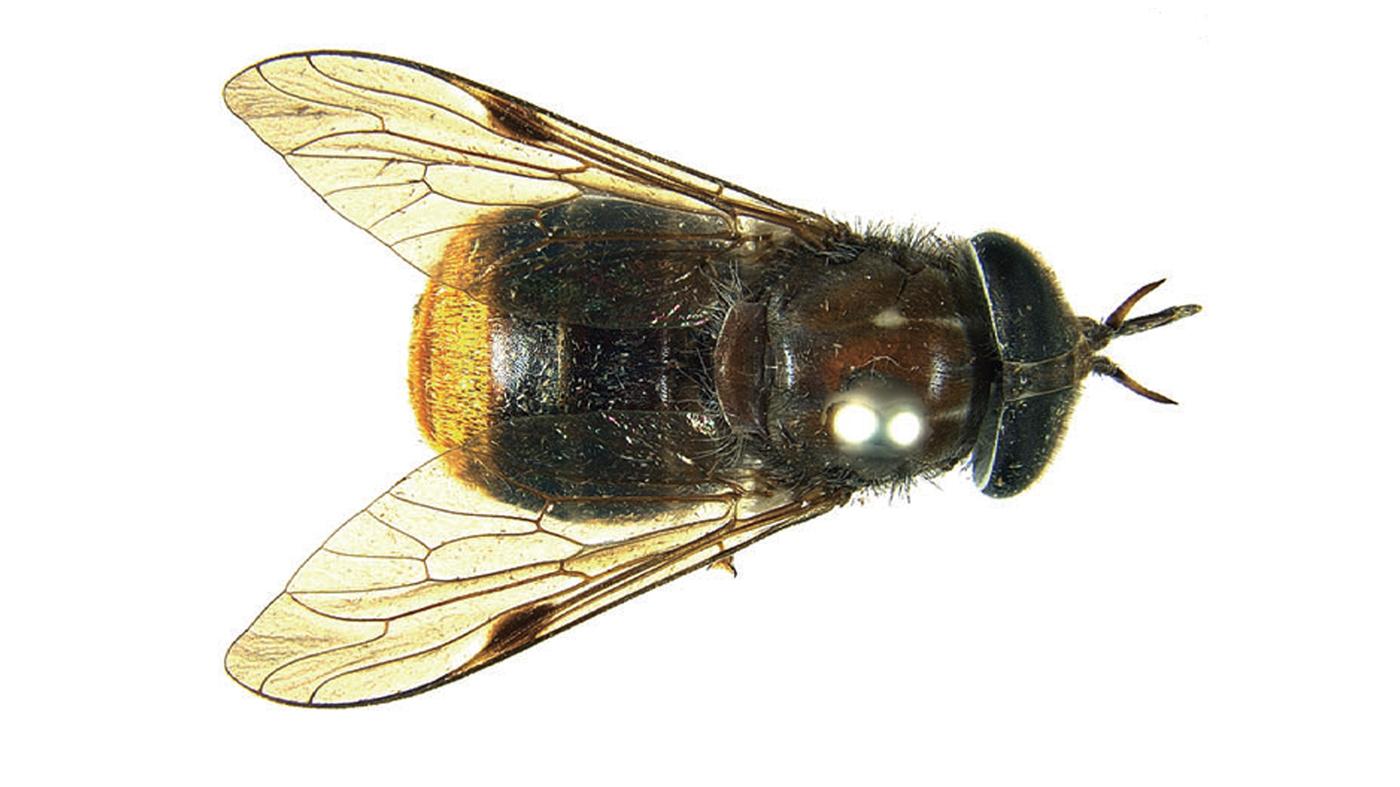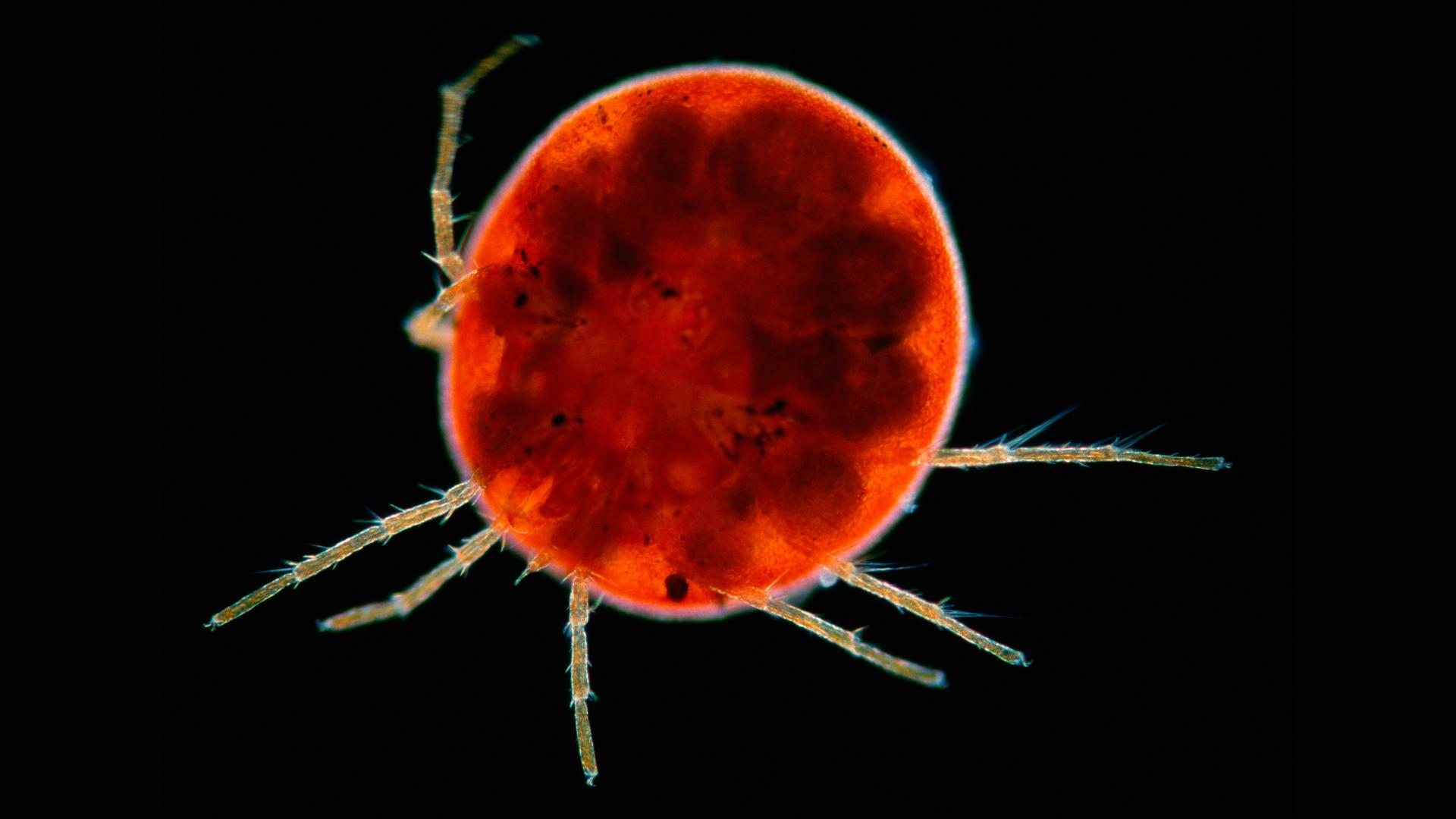The water mite (Hydrachna globosa) is a freshwater arachnid. There’s another species of water mite named after Jennifer Lopez.
A few years ago Paul Sikkel, a marine ecologist at Arkansas State University, and his team were doing research on a fish parasite that exists in the Caribbean.
"[When] we were working in the lab, we often played Bob Marley music," Sikkel told me while on a short break from his research in the Caribbean. "A lot of our pieces of equipment are actually named after Bob Marley songs or phrases. So Bob Marley permeates our research."
So when he found out that he had stumbled upon a new species, and that he had to name it, the answer came in a flash.
"I'm a huge Reggae music fan and I particularly like Bob Marley's music and the things that he campaigned for in his music," Sikkel says.
That’s how “Gnathia Marleyi," a tiny, tan-colored fish parasite with red dots got its name.
You might think that it’s rare for scientists to name new species after celebrities. According to James Hanken it's not. He's a professor of zoology at Harvard University and director of the Museum of Comparative Zoology.
"Around 40 or 50,000 new species are being described every year," he says.
Of course not all of them have traditional names.
Species used to be mainly named for how they look including things such as their color, shape, size or texture. Sometimes they were called after the place they were found or a scientist who did a great deal of research on the subject. Many are still named in this way.
Hanken says the rule is, if you find a new species, you have the right to name it.
But if anyone who discovers the creature gets to name it, then things can get very interesting. There's no shortage of species named after pop culture icons or other public figures.
There's the Beyonce horse fly, George Bush beetle, Lady Gaga fern. Just recently, scientists announced they've named a new water mite after Jennifer Lopez.

So how does naming species work?
Say a scientist finds a fish that he or she knows hasn’t been identified before. He has to write an article for a reputable scientific publication. In it, he has to provide concrete evidence that this is in fact a new species.
Tom Haken says evidence such as photos and samples of its DNA sequence would help. If the animal makes a call, the scientist has to provide a recording of that sound.
Accompanying that article should be a description detailing why the scientist is naming the species. Then, once peers have reviewed it and it's published, that species has a new name.
The scientists I spoke to say naming species after famous people is not a bad thing.
“Regardless of the reason that people are doing this, you can see the impact that it has," Sikkel says. "We would not be having this conversation if it wasn’t for that."
For him, by naming species after someone who has name recognition, scientists can engage a lot more people in a conversation about bio-diversity.
Gonzalo Giribet agrees. He's a professor of zoology in the Museum of Comparative Zoology at Harvard University and curator of Invertebrates in the Museum of Comparative Zoology.
But he takes it a step further.
"I think that the next question is how come we’re still naming species? How come we can go to the moon, we can build super computers and we have no idea how many species are there on Earth," he asks.
Giribet thinks there are more species yet to be found and named than the ones we already know. And he says if a water mite named after Jennifer Lopez draws more attention to how many of these are out there, then great!
One other question, however, is what about the people on the other end.
Bob Marley didn’t ask to have his name on a fish parasite. Would he be upset?
“I think that if he realized that it was more than just a parasite and that it was a sea creature, he would appreciate that," Sikkel says.
Giribet feels the same.
"Once you are a scientist, you don’t care if something looks nice or not. It’s still an animal. It’s part of an eco-system, it’s part of the integral diversity, so I don’t think people would be offended by that,” he says.
In the end, while naming species after celebrities is fun and interesting, it remains a serious, scientific and creative act.
"It’s not a trivial exercise," Hanken says. "It involves a lot of work and money. It’s a real thought process," he adds.
A few years ago Paul Sikkel, a marine ecologist at Arkansas State University, and his team were doing research on a fish parasite that exists in the Caribbean.
"[When] we were working in the lab, we often played Bob Marley music," Sikkel told me while on a short break from his research in the Caribbean. "A lot of our pieces of equipment are actually named after Bob Marley songs or phrases. So Bob Marley permeates our research."
So when he found out that he had stumbled upon a new species, and that he had to name it, the answer came in a flash.
"I'm a huge Reggae music fan and I particularly like Bob Marley's music and the things that he campaigned for in his music," Sikkel says.
That’s how “Gnathia Marleyi," a tiny, tan-colored fish parasite with red dots got its name.
You might think that it’s rare for scientists to name new species after celebrities. According to James Hanken it's not. He's a professor of zoology at Harvard University and director of the Museum of Comparative Zoology.
"Around 40 or 50,000 new species are being described every year," he says.
Of course not all of them have traditional names.
Species used to be mainly named for how they look including things such as their color, shape, size or texture. Sometimes they were called after the place they were found or a scientist who did a great deal of research on the subject. Many are still named in this way.
Hanken says the rule is, if you find a new species, you have the right to name it.
But if anyone who discovers the creature gets to name it, then things can get very interesting. There's no shortage of species named after pop culture icons or other public figures.
There's the Beyonce horse fly, George Bush beetle, Lady Gaga fern. Just recently, scientists announced they've named a new water mite after Jennifer Lopez.

So how does naming species work?
Say a scientist finds a fish that he or she knows hasn’t been identified before. He has to write an article for a reputable scientific publication. In it, he has to provide concrete evidence that this is in fact a new species.
Tom Haken says evidence such as photos and samples of its DNA sequence would help. If the animal makes a call, the scientist has to provide a recording of that sound.
Accompanying that article should be a description detailing why the scientist is naming the species. Then, once peers have reviewed it and it's published, that species has a new name.
The scientists I spoke to say naming species after famous people is not a bad thing.
“Regardless of the reason that people are doing this, you can see the impact that it has," Sikkel says. "We would not be having this conversation if it wasn’t for that."
For him, by naming species after someone who has name recognition, scientists can engage a lot more people in a conversation about bio-diversity.
Gonzalo Giribet agrees. He's a professor of zoology in the Museum of Comparative Zoology at Harvard University and curator of Invertebrates in the Museum of Comparative Zoology.
But he takes it a step further.
"I think that the next question is how come we’re still naming species? How come we can go to the moon, we can build super computers and we have no idea how many species are there on Earth," he asks.
Giribet thinks there are more species yet to be found and named than the ones we already know. And he says if a water mite named after Jennifer Lopez draws more attention to how many of these are out there, then great!
One other question, however, is what about the people on the other end.
Bob Marley didn’t ask to have his name on a fish parasite. Would he be upset?
“I think that if he realized that it was more than just a parasite and that it was a sea creature, he would appreciate that," Sikkel says.
Giribet feels the same.
"Once you are a scientist, you don’t care if something looks nice or not. It’s still an animal. It’s part of an eco-system, it’s part of the integral diversity, so I don’t think people would be offended by that,” he says.
In the end, while naming species after celebrities is fun and interesting, it remains a serious, scientific and creative act.
"It’s not a trivial exercise," Hanken says. "It involves a lot of work and money. It’s a real thought process," he adds.
